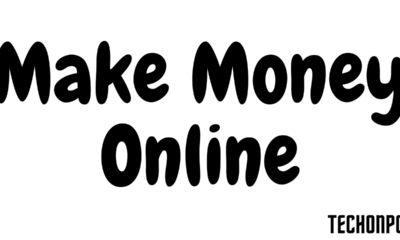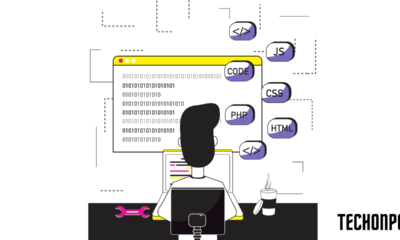Education
How to Increase User Engagement on a Mobile App
Push notification, gamification, simple sign-up are some ways to increase user engagement. Find a top 10 list here and know about user engagement metrics.
Published
3 years agoon
By
techonpc
Increase User Engagement on a Mobile App
Simform conducted a study some time back. Out of 204 billion apps downloaded in the year, on average, people had 40 apps installed on their phones. Now, out of those 40 apps, 89% of the time was split between 18 apps. That means, more than half of the apps remained unused or less explored. The study goes on to elaborate that millennials have more than 67 apps installed on the phone. However, the number of the commonly used app is 25!
Another survey conducted by Localytics finds that more than 60% of the customers stop interacting with an app within the first month of installing it. Only 20% make it to the end of three months.
Do you get the picture? User acquisition is indeed a crucial part but retaining them is equally significant, if not more! And only one thing can ensure that – user engagement on the app.
How can you do that? We are here to spill the secrets! As the learned experts of mobile app development services, we can guide you to build an application that can win the users!
10 Effective Ways to Improve User Engagement on a Mobile App
1. Give a Quick Tutorial
Every app is unique and the users will need some time to get a hang of it. Providing a short and sweet onboarding experience goes a long way.
Highlight the most useful features in your app and explain how people can use these. Make sure to provide screenshots of the features and let them swipe to understand the functionality of the app.
It’s better to add three to four screens before they can get started with your app. Don’t forget to add a progress bar featuring how many slides they need to see before using the app. It will keep them engaged and encourage them to wait for some time before using the app. Also, we recommend you not to create text-heavy screens which may turn people away.
Instead of presenting all the information for the users to consume passively, encourage them to take some action. For instance, ‘double-tap to open a document’, ‘press and drag to move a file’, etc. This will give them hands-on training.
2. Simplify Sign Up Process
Offering multiple ways to create an account instantly enhances users’ convenience. You can let them sign up with Facebook, Google, Phone Number, etc.
If you want them to fill up a form, make sure it’s short and quick. No one likes to fill up a lengthy form. Some apps allow the users to create an account with a name, email, and password.
OTP verification is one of the easiest ways to create an account. Simply ask people to put their phone number, verify with a one-time password and that’s all!
Optional sign-up is a good practice to implement. People may install your app to check the products or services you offer. Compelling them to sign up is not a good idea. If they are interested, they will surely sign up.
3. Push Notification
Ask the experts of digital marketing services. They will invariably stress the power of push notification to drive user engagement.
Here are some statistics related to push notification:
- Push notifications can enhance app engagement by up to 88%
- For an eCommerce app, an abandoned cart push notification can bring back the customers and increase revenue by up to 15%
- Notifications including a picture have a 56% of opening rate while notifications with emoji improve the opening rate by 85%
(source: Invesp and BloggingCage)
Just make sure that the push notifications are interesting and relevant to the users so as not to irritate them. Basing notification on user behavior is a smart approach to adopt.
4. Gamification
It is a great tool to improve user engagement. You can introduce gaming elements to non-game apps in order to encourage people to interact more with the app. Here are some examples of non-game apps that strategically include gaming elements:
- Ecommerce App – play a game (say, spin the wheel) to register in a lucky draw or win certain points that translate to discounts
- E-learning App – win a quiz to unlock a new chapter
- Fitness App – burn some calories to win a point
- Productivity Boosting App – for each completed task, the user earns a point
Your app may also allow the users to share their points with friends on social media. These little elements make all the difference.
5. Unique Features
Introducing unique features often inspires user engagement. Say you have built a messaging application. There are numerous similar apps available in the market. Why will people use yours?
Your app should give something new that none else is providing. For instance, your app may allow people to create an AR room, add their friends and play games together. It can also allow them to create quirky stickers based on their real images. Brainstorm more such ideas to make your app stand out from the rest.
6. Intuitiveness
Indeed your app should have some unique elements but people should feel at home with your app right from the beginning. This is why the experts of mobile app development services always say that intuitiveness is a crucial aspect of a mobile app.
For instance, a paper plane icon is widely acknowledged as the Send icon. Similarly, a floppy disk icon denotes Save. A down arrow sign may indicate a long content is shortened and on tapping the arrow, the user can check the entire content. The hamburger menu suggests multiple menu options are present there. A bell icon indicates notifications.
We hope you got the idea.
7. Chatbot
Nowadays, people don’t want to wait for getting a response. If you fail to respond immediately, they may lack interest, bounce, and install other apps. Customer support should be a primary concern right from the time when someone hits the install button.
Integrating a chatbot into your app can be a perfect way to support your users. Instead of calling you or dropping an email (which most people don’t do!), they can find a solution to common concerns through a chatbot. This will encourage people to interact more with your app.
8. Offers & Loyalty Programmes
If your business model allows you to provide the users with discount offers or a loyalty program, you should capitalize on the opportunity. Time-sensitive discounts have been found to be very effective among consumers.
And a classic example of a loyalty program is to give the users some points upon shopping or performing a certain action, say featuring a review, referring a friend, and so on.
9. In-App Purchase
If you want to monetize your app, it’s better not to ask people to purchase your app while installing it. Rather, allow them to use the basic features. If they want to unlock new features, they have to purchase these. This is a strategic way to increase user engagement.
10. In-App Messaging
Notifications are displayed even when people are not using the app while in-app messages are featured inside the app.
Wondering why you need in-app messaging when you already have push notifications at their place?
Because it effectively increases user engagement and encourages people to perform an action. Suppose, yours is an OTT app. Its in-app messages can inform the users about the new releases, upcoming launches, interviews of a specific actor, and so on.
User Engagement Metrics on a Mobile App
Here are some user engagement metrics you should keep an eye on:
- User acquisition
- Number of active users
- Screen flow
- Retention rate
- Conversion rate
- Bounce rate
- Abandonment rate
- User feedback, reviews, ratings
Wrapping Up
As you can understand, building a user-engaging application demands you to analyze the users’ perspective. If your app offers a top-notch user experience, you’ve got nothing to worry about. Implement our insights to win the user’s hearts and feel free to thank us later!
Follow Me

Unleashing the Power of the Office Accelerator: Maximizing Productivity and Efficiency in the Workplace with Office 365 Accelerator

Unlocking the Hidden Potential of Your Website: Strategies for Growth

From AI to VR: How Cutting-Edge Tech Is Reshaping Personal Injury Law in Chicago
Trending

 Microsoft4 years ago
Microsoft4 years agoMicrosoft Office 2016 Torrent With Product Keys (Free Download)

 Torrent4 years ago
Torrent4 years agoLes 15 Meilleurs Sites De Téléchargement Direct De Films 2020

 Money4 years ago
Money4 years ago25 Ways To Make Money Online

 Torrent4 years ago
Torrent4 years agoFL Studio 12 Crack Télécharger la version complète fissurée 2020

 Education3 years ago
Education3 years agoSignificado Dos Emojis Usado no WhatsApp

 Technology4 years ago
Technology4 years agoAvantages d’acheter FL Studio 12

 Technology4 years ago
Technology4 years agoDESKRIPSI DAN MANFAAT KURSUS PELATIHAN COREL DRAW

 Education3 years ago
Education3 years agoBest Steph Curry NBA 2K21 Build – How To Make Attribute, Badges and Animation On Steph Curry Build 2K21

You must be logged in to post a comment Login